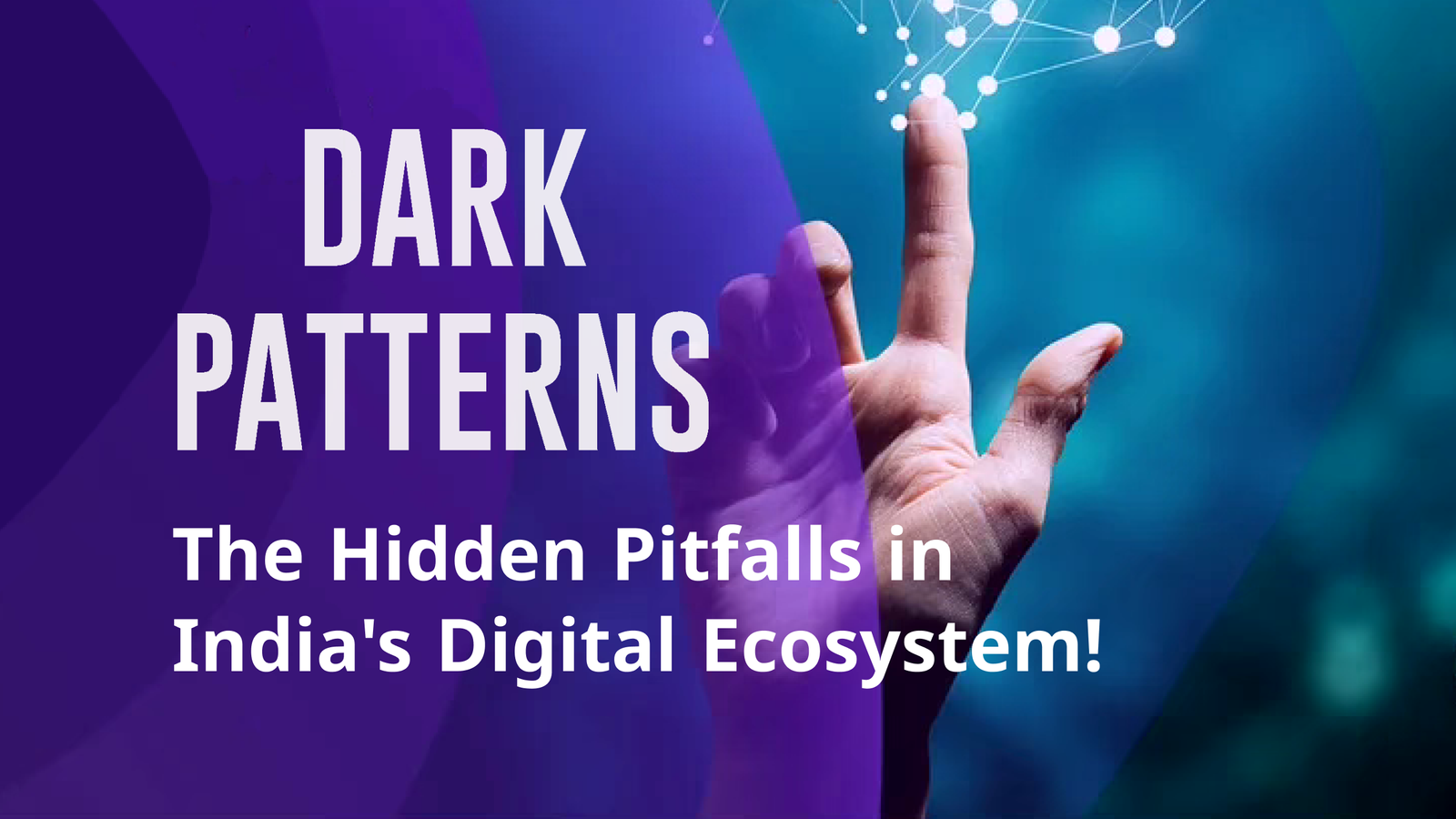As we enter 2024-2025, India’s digital landscape continues to grow exponentially. With this growth comes a troubling phenomenon—dark patterns. These manipulative design tactics aim to deceive users into taking unintended actions, often at the cost of privacy, money, or time. While dark patterns are a global issue, their impact is increasingly felt in India, where digital adoption is surging. What are dark patterns, and why are they such a pressing concern in 2024-2025?
What are Dark Patterns?
Dark patterns are deceptive design choices websites and apps use to subtly steer users into actions they might not otherwise take. These tactics can range from making it difficult to unsubscribe from a service to hide key information, leading users to unknowingly accept unfavourable terms. In essence, dark patterns exploit psychological loopholes in user behaviour to benefit businesses at the user’s expense.
The Growing Presence in India’s Digital Economy
With India’s rapid digital transformation, especially post-pandemic, more people are engaging with online services than ever before. Whether shopping, streaming, or banking, users are constantly navigating the web. Unfortunately, this increased engagement has led to a rise in dark patterns in the Indian context, especially on e-commerce platforms, digital payment gateways, and even government-related apps.
A recent report from The Hindu highlights that dark patterns are becoming a significant concern in India. As platforms compete for user attention, some resort to manipulative designs to boost profits. For instance, consumers may find it difficult to cancel a subscription, or are tricked into signing up for newsletters or sharing personal data.
Why Dark Patterns Are Dangerous
Dark patterns aren’t just annoying—they can lead to serious consequences. For one, they erode trust between users and platforms. Once consumers feel tricked, they are less likely to engage with a brand again. Moreover, these deceptive tactics often involve the misuse of personal data, exposing users to privacy risks. For a country like India, where digital literacy varies significantly, dark patterns disproportionately impact less tech-savvy users, making it even more problematic.
Beyond individual harm, the widespread use of dark patterns can undermine the credibility of the broader digital ecosystem. When users lose faith in online services, it stunts the growth of India’s digital economy, slowing down progress in areas like e-commerce, digital banking, and government-led digital initiatives.
Legal & Regulatory Challenges in India
Despite the rising concern, India currently lacks specific laws to combat dark patterns. The Consumer Protection Act offers some relief by targeting unfair trade practices, but the legislation isn’t explicitly designed to address deceptive online design. In contrast, regions like the European Union have stricter data privacy regulations, such as the General Data Protection Regulation (GDPR), which includes protections against dark patterns.
However, the landscape is changing. Discussions are underway about introducing digital consumer protection laws that specifically target dark patterns in India. These laws could place more responsibility on companies to maintain transparent and user-friendly design practices.
Types of Dark Patterns in 2024-2025
Privacy Deception
Manipulating users into unknowingly sharing more personal data than intended.
Have you ever agreed to an app’s terms & conditions without being able to read what the terms are?
Interface Interference
Highlighting certain information on the interface and hiding others, misdirecting users into taking an action
Have you noticed checkboxes for receiving promotional emails are often pre-checked by default when you create an account?
Nagging
Constant pop-ups and notifications pushing users to take an action, making it difficult to finish their task at hand.
Have you ever attempted to close a popup Ad, only for it to show up again later in your journey in a different form?
Trick Questions
Deliberate use of confusing or vague language, misdirecting users into taking an action.
Have you ever clicked on the wrong option for a confusing question that tricked you into unintended actions?
Drip Pricing
Revealing additional fees gradually throughout the purchase process, making the final price higher than that originally quoted.
Have you ever added a product to your cart and later realised the total bill was higher than the product’s original cost?
Forced Action
Forcing users to complete an unwanted action to proceed or access desired content.
Have you ever felt pressured to agree to something you weren’t comfortable with just to use an app?
Basket Sneaking
Adding unwanted items to a user’s online shopping cart without their explicit consent.
Have you ever found extra subscriptions mysteriously added to your online shopping cart?
False Urgency
Creating a sense of artificial pressure, based on time or stock availability, to manipulate users into making rushed decisions.
Have you ever rushed into buying something because of a “limited time offer” that you thought was about to expire?
Confirm Shaming
Using guilt or social pressure to manipulate users into confirming an action.
Have you ever felt manipulated into giving up your email for a discount code by guilt-inducing prompts?
Subscription Trap
Deceiving users into subscribing to a recurring service without fully grasping the ongoing commitment, often making cancellation difficult.
Have you ever tried to sign up for a free trial but had to provide your credit card details?
Disguised Advertisement
Masking advertisements as actual content that blends in with the rest of an interface, tricking customers into clicking on them.
Have you ever encountered ads that blends in so well you almost click on them thinking they’re part of the content?
Bait & Switch
Advertising a particular outcome based on the user’s action but deceptively serving an alternate outcome.
Have you ever found a product at a certain price, only to discover it’s mysteriously out of stock in your chosen size?
How Users Can Protect Themselves
As dark patterns evolve, users must remain vigilant. Here are a few tips for navigating India’s digital space in 2024-2025:
- Read the fine print: Always review the terms and conditions, especially when sharing personal information or making online purchases.
- Check your settings: Frequently review privacy and notification settings for apps and websites you use regularly.
- Be wary of defaults: Many platforms default to options that benefit them, like automatic renewals or agreeing to data sharing. Make sure to opt-out of anything you’re uncomfortable with.
- Seek help: If you feel tricked by a platform, report it to the Consumer Protection Act or seek advice from digital rights groups.
Conclusion: The Path Ahead
The rise of dark patterns in India’s digital landscape poses a growing challenge for consumers and regulators alike. As we look towards 2024-2025, the need for clearer regulations, greater transparency, and enhanced digital literacy is crucial to protecting users from these deceptive tactics. While it’s up to companies to ensure fair practices, consumers should also take an active role in safeguarding their online experiences. The next phase of India’s digital growth must prioritize user trust, and combating dark patterns is a vital step in that direction.





